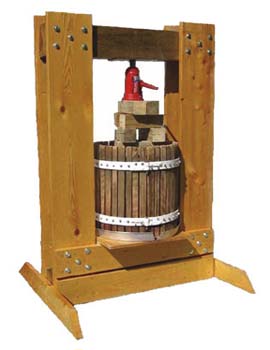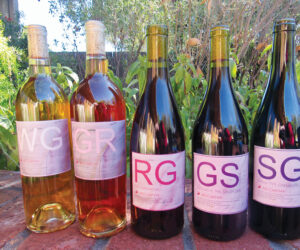 This article originated as I was explaining to my son Christian the differences in the way I make wine and the way his grandfather used to make it. It all began in Jersey City, New Jersey, in the 1950s when I was a teenager and helped my father, Emilio Zamarra, make wine every fall. He had immigrated to the U.S. from southern Italy and made wine every year in the basement of the eight family tenement building where we lived.
This article originated as I was explaining to my son Christian the differences in the way I make wine and the way his grandfather used to make it. It all began in Jersey City, New Jersey, in the 1950s when I was a teenager and helped my father, Emilio Zamarra, make wine every fall. He had immigrated to the U.S. from southern Italy and made wine every year in the basement of the eight family tenement building where we lived.
He washed everything with lots of water before starting. I also wash everything using hot washing soda and lots of rinse. Pop didn’t measure anything – it was all done by the formula he kept in his head. No chemicals were added. He relied on the natural yeast on the grapes for the fermentation to take place. He knew enough to punch down the must twice a day, but he took no measurements.
After the crushed grapes had fermented for a week, it was time to barrel the free flowing wine and press what was left in the fermenting barrels. He crushed everything including the stems and he pressed the grapes using a homemade press that utilized a large three inch diameter acme screw, 42 inches long and quite heavy.
In contrast, I use a crusher-destemmer, and designed and built a press that uses his original basket. However, I use a hydraulic bottle jack instead of the screw for pressing. It’s so much easier – and anyone can help – no big muscles required.
I’ve read a few books on modern day winemaking and have found three major areas that are significantly different from the methods used by my father fifty years ago.
The first major difference involves the use of a hydrometer to measure the specific gravity of the grape juice throughout the fermentation process. I also measure the temperature of the must each time I punch it down and keep a record of the results. When the fermentation gets vigorous during the third and fourth days, I punch down the must as many as five times a day. If the temperature exceeds 90 °F, I cool down the must using frozen water jugs. My father never tried to control the temperature – he just let it run its course.
In the way of equipment, he used 55 gallon wooden barrels, whereas I use stainless steel containers for the primary fermentation.
The second major difference between my father’s methods and my own is the use of sodium metabisulfite to kill the natural yeast on the grapes. It is the only chemical I use – at the rate of 50 ppm, and I never add it again. Then I inoculate the must with my own choice of winemaker’s yeast. I feel that by doing this I am controlling the process more stringently and consistently. I know how hot the must can get, and I know the upper limits of the alcohol that the yeast will allow.
Although my father relied on the natural yeast, I don’t believe he ever lost his entire production (100 to 150 gallons) because of a lack of fermentation. However, my father occasionally had a portion of a barrel turn to vinegar.
The third variable that is significantly different is the control of oxygen and minimizing its affects on the wine. My father kept his wine in 55 gallon barrels stored on their sides. He got the wine by either using a spigot at the base of the barrel, or by inserting a rubber hose in a hole at the top of the barrel and siphoning it out. Each time he or I siphoned off a gallon of wine, we removed the bung and created an opportunity for air to enter the partially filled barrel. Naturally, the possibility of greater amounts of air and other airborne contaminants entering the barrel increased as we consumed more of the wine. Consequently, a partial barrel of wine would turn to vinegar every four or five years.
In contrast, I do not use wooden barrels and conduct the secondary fermentation in glass carboys with oak chips added. I keep the small space above the wine filled with carbon dioxide to insure that no oxygen or air is in contact with the wine. When I am satisfied that the fermentation is completed and with the taste of the wine, I begin bottling. All bottling is completed within one year of the initial crushing of the prior year.
I and many others thought my father’s wine was very good, always fully dry with a light touch of fruitiness. My sister is one of the few people who has drunk both my wine and my father’s – and she says mine is better.
Finally, when Pop made wine, the entire building reeked of grapes for almost two weeks. Uneducated as I was in the world of winemaking, I thought it was a natural part of the process. Consequently, I thought my house would be plagued with grape aromas and I didn’t want to subject my wife and children to that experience. I began in the garage and kept the door to the living room shut tight. But I kept the floor in the garage clean of crushed grapes. The result – voilà – no smell. It was the grapes underfoot, that caused all the aromas back in the 1950s. Had I known, I would have started making wine a lot sooner!







